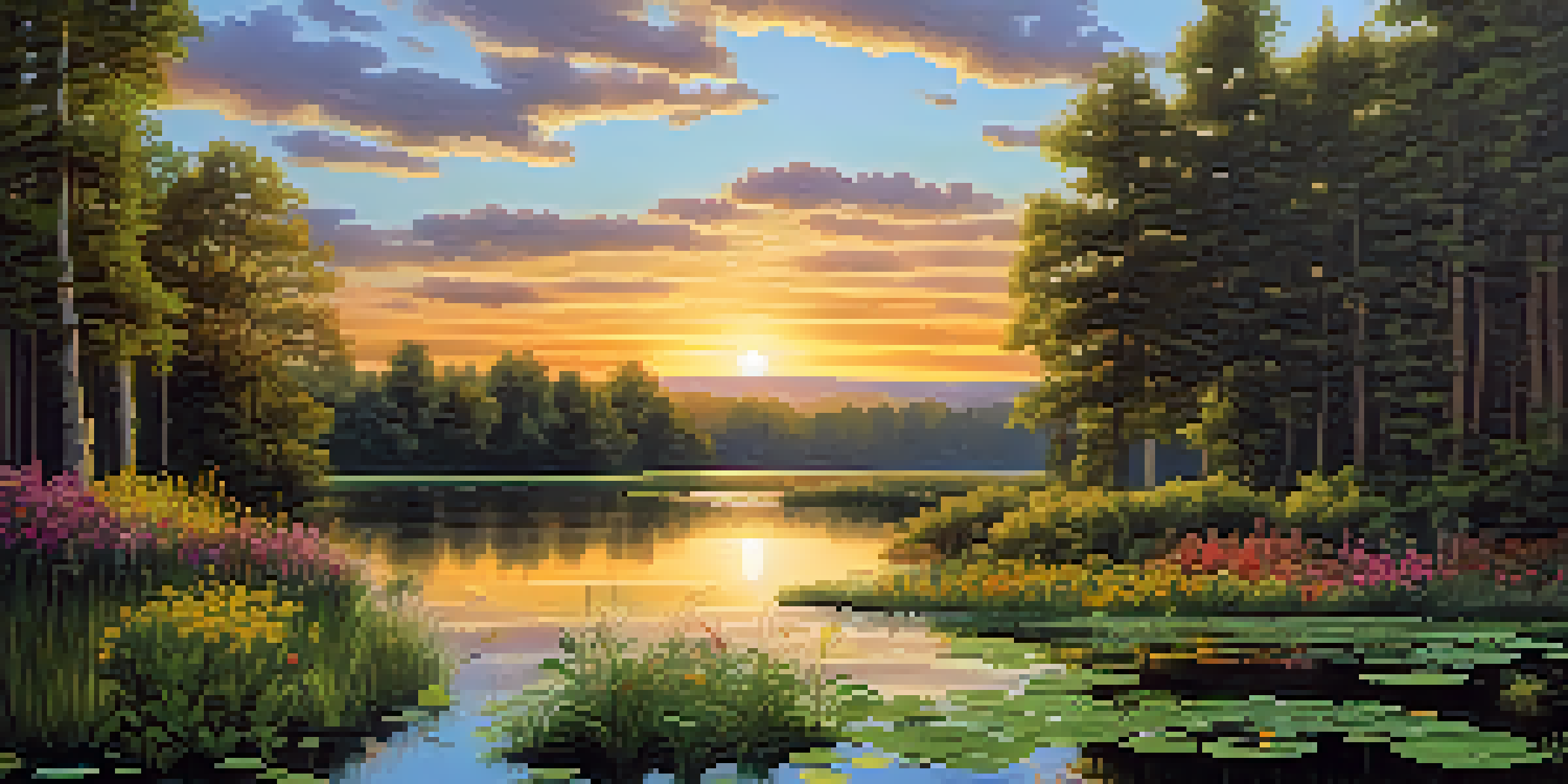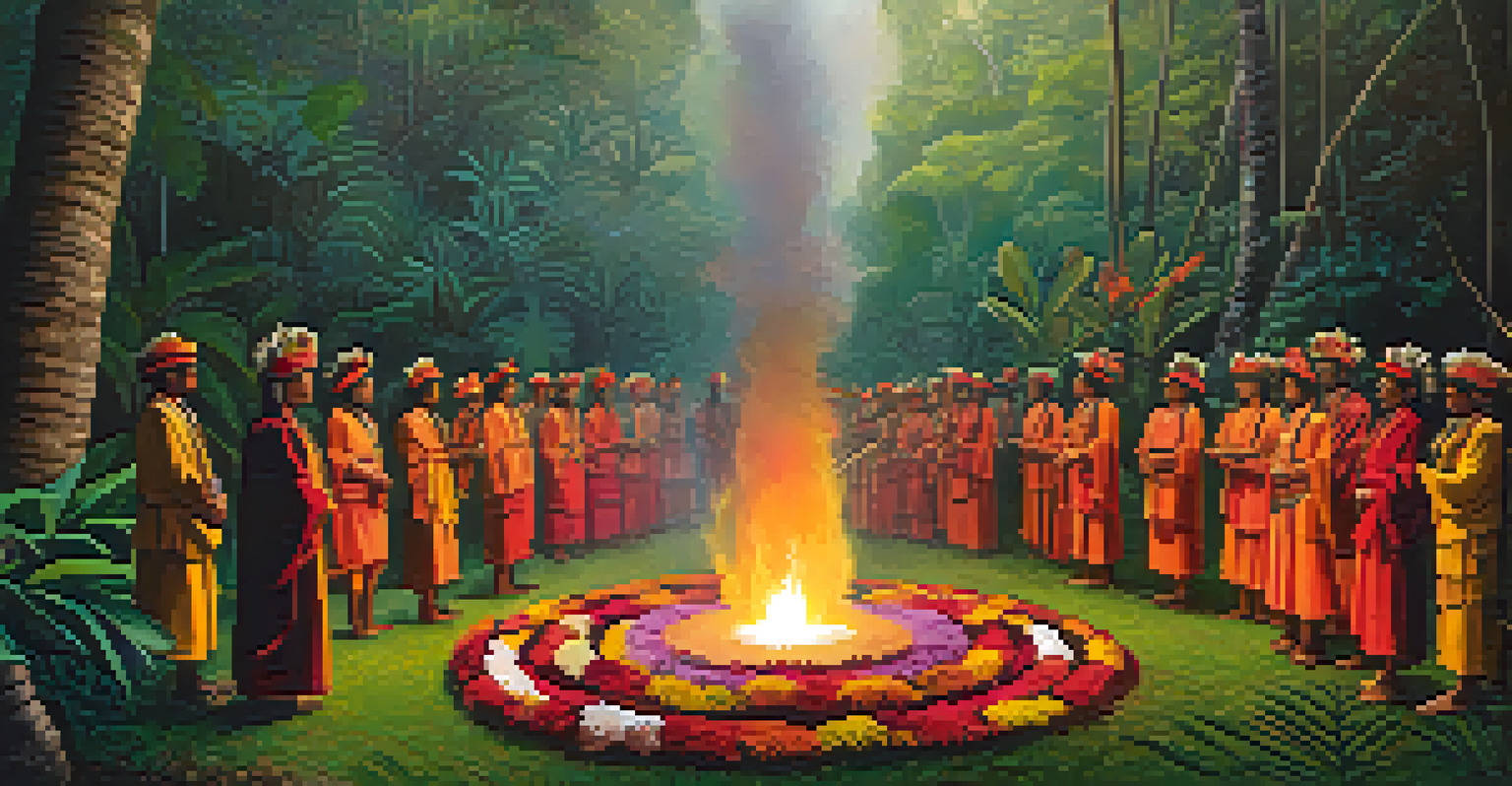Cultural Perspectives on Hallucinogens Across Generations

Understanding Hallucinogens: A Brief Overview
Hallucinogens are substances that can alter perception, mood, and cognitive processes. These drugs, ranging from natural substances like psilocybin mushrooms to synthetic ones like LSD, have been used in various cultures for centuries. They often play a significant role in spiritual rituals and personal exploration.
Psychedelics are a catalyst for human growth and creativity.
In many indigenous cultures, hallucinogens are seen as sacred tools for healing and communication with the spiritual realm. This contrasts sharply with the modern Western perspective, which has largely viewed these substances through a lens of caution and legality. Understanding this dichotomy is essential for appreciating how cultural contexts shape perceptions of these substances.
As we explore further, we'll see how generational shifts in attitudes toward hallucinogens reflect broader societal changes. From the counterculture movements of the 1960s to today's discussions about mental health, each generation has its own unique relationship with these powerful substances.
Historical Use of Hallucinogens in Indigenous Cultures
Indigenous cultures worldwide have historically utilized hallucinogens for spiritual and healing purposes. For instance, the use of peyote in Native American rituals showcases the plant's significance in connecting with the divine. Similarly, ayahuasca ceremonies in the Amazon are revered for their transformative experiences.

These traditional practices often emphasize the importance of community and shared experiences, highlighting a collective understanding of hallucinogens as tools for growth. This contrasts with modern, individualistic approaches where personal exploration might overshadow communal connections. Such historical perspectives remind us of the rich tapestry of beliefs surrounding these substances.
Cultural Views on Hallucinogens
Hallucinogens are perceived differently across cultures, with indigenous practices emphasizing their spiritual significance compared to modern Western caution.
As we reflect on these practices, it's clear that they are not merely recreational; they are deeply embedded in cultural identities and healing traditions. This understanding paves the way for more nuanced conversations about their place in contemporary society.
The Counterculture Movement and Hallucinogens
The 1960s marked a significant turning point in the perception of hallucinogens, particularly in Western cultures. Influenced by figures like Timothy Leary, many young people began to explore psychedelics as a means of expanding consciousness and challenging societal norms. This era saw a surge in experimentation and a push against the establishment.
The greatest gift of the forest is that it connects us to nature and ourselves.
However, this period was not without backlash. The government's response, characterized by strict drug policies and stigmatization, led to a complex relationship with hallucinogens that continues today. Many in the older generation view these drugs with skepticism, shaped by fears of addiction and mental health issues.
Despite this, the counterculture movement laid the groundwork for ongoing discussions about the potential benefits of psychedelics. Today, as research into their therapeutic uses resurfaces, we see a generational divide in attitudes, with younger people increasingly advocating for their acceptance.
Modern Research and Changing Attitudes
In recent years, there has been a resurgence of scientific interest in hallucinogens, particularly regarding their therapeutic potential. Studies have shown promising results for conditions like PTSD, depression, and anxiety, leading to a shift in how these substances are perceived. This newfound respect is often embraced by younger generations who see the potential for healing.
As this research progresses, the stigma surrounding hallucinogens is gradually diminishing. Many individuals are starting to view them not just as recreational drugs, but as valuable tools in mental health treatment. This cultural shift is significant, as it reflects a broader acceptance of alternative therapies.
Generational Attitudes Shift
Younger generations are increasingly advocating for the acceptance and therapeutic use of hallucinogens, contrasting with older generations' skepticism.
However, these changes also raise important questions about responsible use and the risks involved. Balancing enthusiasm for these substances with awareness of their potential dangers is crucial as society navigates this evolving landscape.
Generational Differences in Hallucinogen Use
Generational attitudes toward hallucinogens often reflect broader societal trends and values. Younger generations, who grew up in a more open and exploratory cultural climate, tend to be more accepting of these substances. They often advocate for legalization and decriminalization, viewing hallucinogens as a pathway to personal growth.
In contrast, older generations, shaped by the War on Drugs and its accompanying narratives, may harbor reservations about their safety and legality. This divide can lead to misunderstandings, where younger individuals may feel judged while older individuals may feel concerned for the well-being of the youth.
Bridging this generational gap requires open dialogue and education. By sharing experiences and knowledge, both sides can foster a more comprehensive understanding of hallucinogens and their place in modern society.
Hallucinogens and Mental Health: A New Frontier
The conversation around mental health has evolved significantly, with more individuals seeking alternative treatments. Hallucinogens are increasingly viewed as potential therapeutic agents, particularly in treating conditions like depression and anxiety. This perspective is especially prevalent among younger populations who prioritize mental well-being.
As more studies emerge showcasing the efficacy of psychedelics in clinical settings, conversations about their integration into mental health care are becoming more mainstream. This shift challenges traditional approaches and encourages a reevaluation of how we treat psychological conditions. It also invites individuals to share their journeys with hallucinogens as part of their healing processes.
Therapeutic Potential of Psychedelics
Recent research highlights the promising therapeutic applications of hallucinogens for mental health conditions, encouraging a reevaluation of their role in treatment.
However, it's essential to approach this frontier mindfully. While the potential is exciting, understanding the risks and ensuring proper guidance in their use is crucial for safe and effective outcomes.
Looking Ahead: The Future of Hallucinogens in Society
As we look to the future, the role of hallucinogens in society is poised for further evolution. With ongoing research and changing legal landscapes, we may see a greater acceptance of these substances in both therapeutic and recreational contexts. This potential shift could lead to new cultural narratives surrounding hallucinogens, emphasizing their positive contributions to well-being.
However, the journey ahead is not without challenges. Maintaining a balanced approach that prioritizes safety and responsibly addresses the potential risks will be essential as public perception continues to shift. Engaging in open conversations across generations will be key to navigating this evolving landscape.

Ultimately, the future of hallucinogens will depend on how society integrates these substances into cultural and medical frameworks. By learning from the past and embracing newfound knowledge, we can foster a more informed and compassionate view of hallucinogens in our lives.